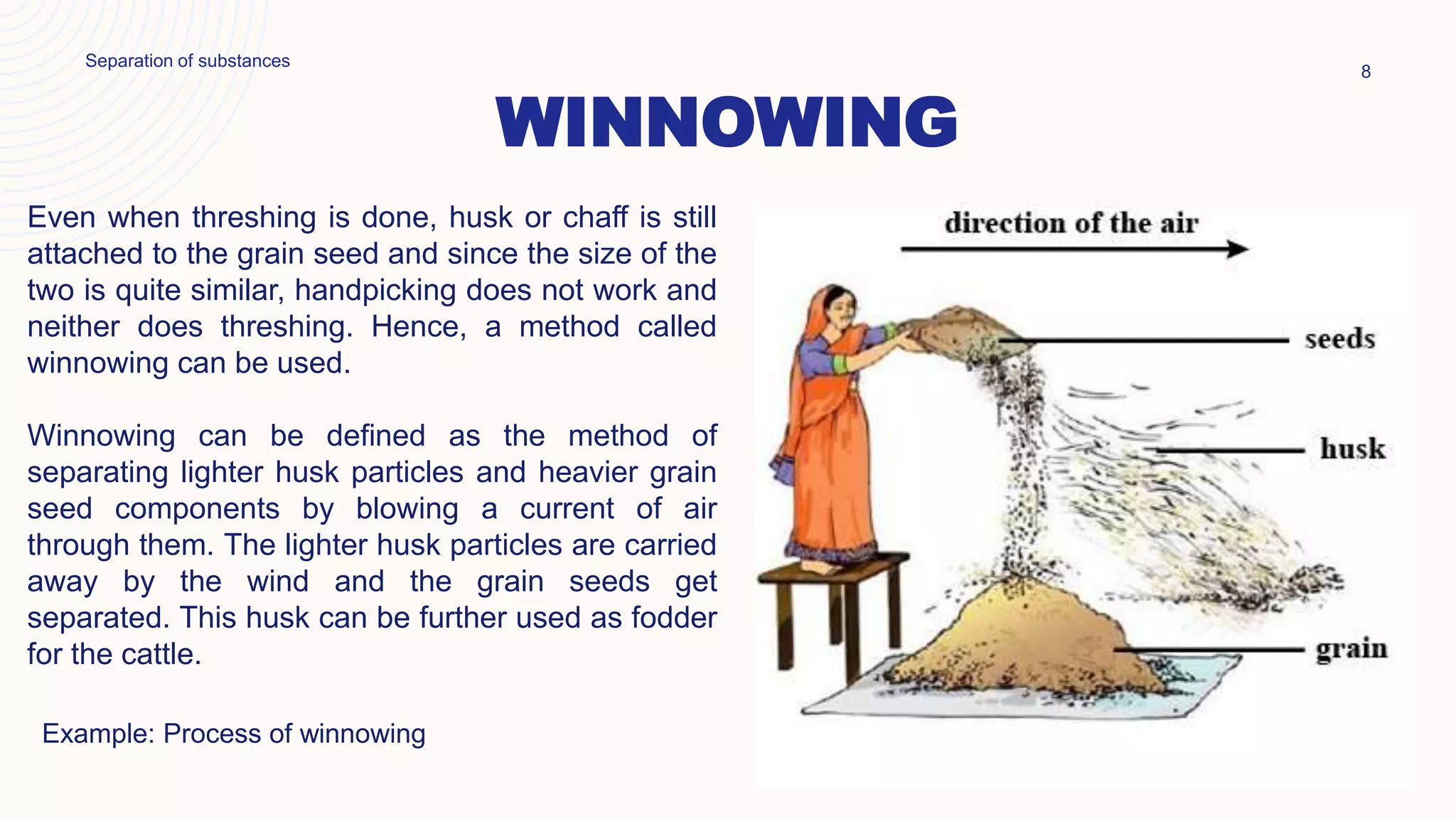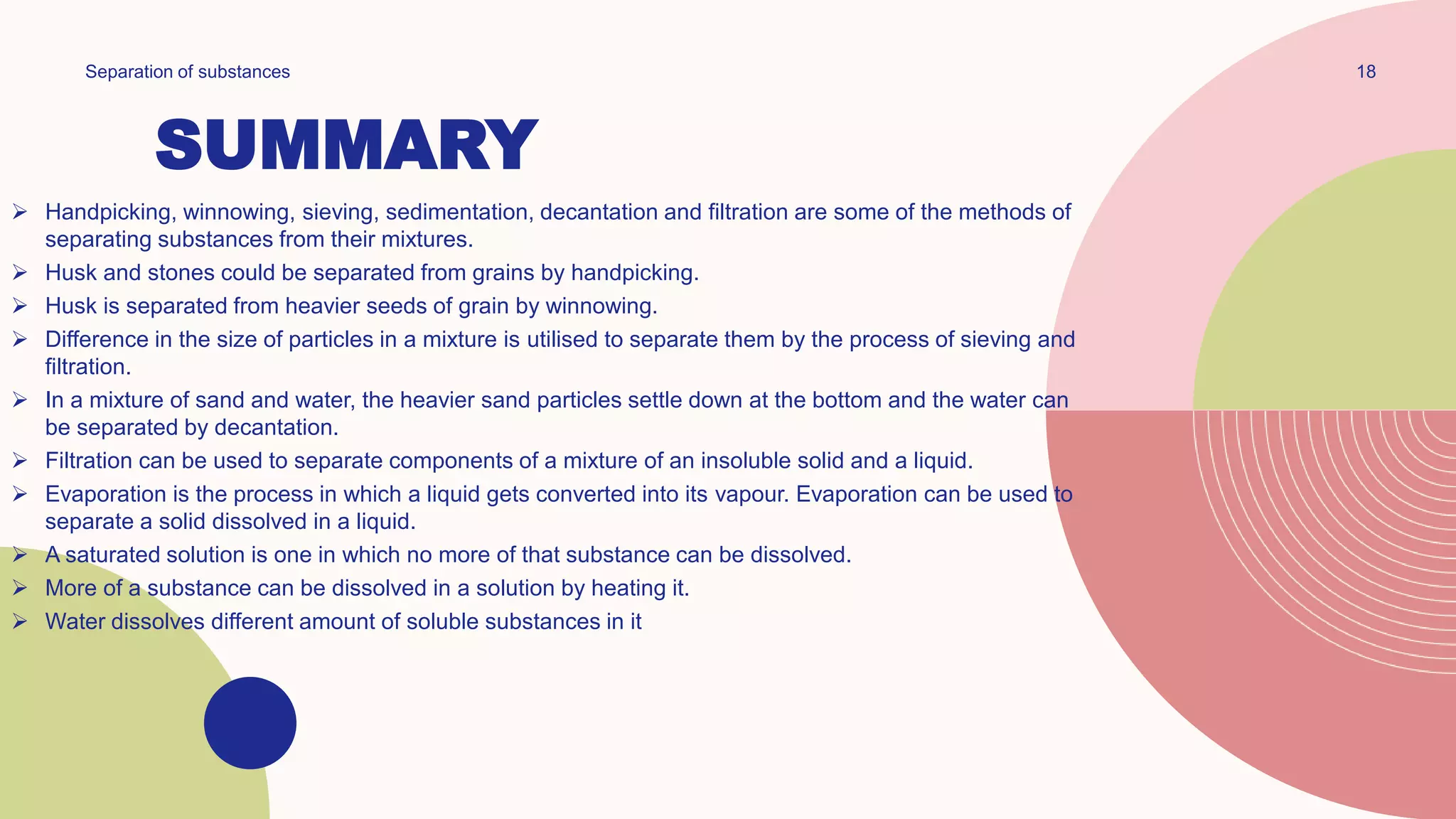This document provides an overview of various methods for separating substances. It begins with an introduction explaining why separation is often needed, such as to remove impurities. The document then details several separation techniques including handpicking, threshing, winnowing, sieving, sedimentation, decantation, filtration, and evaporation. It notes that multiple techniques may be needed to separate some substances like salt from sand. The document also discusses saturated solutions and how heating can increase the amount of solute water can dissolve. It concludes by defining some key terms related to separation.


















